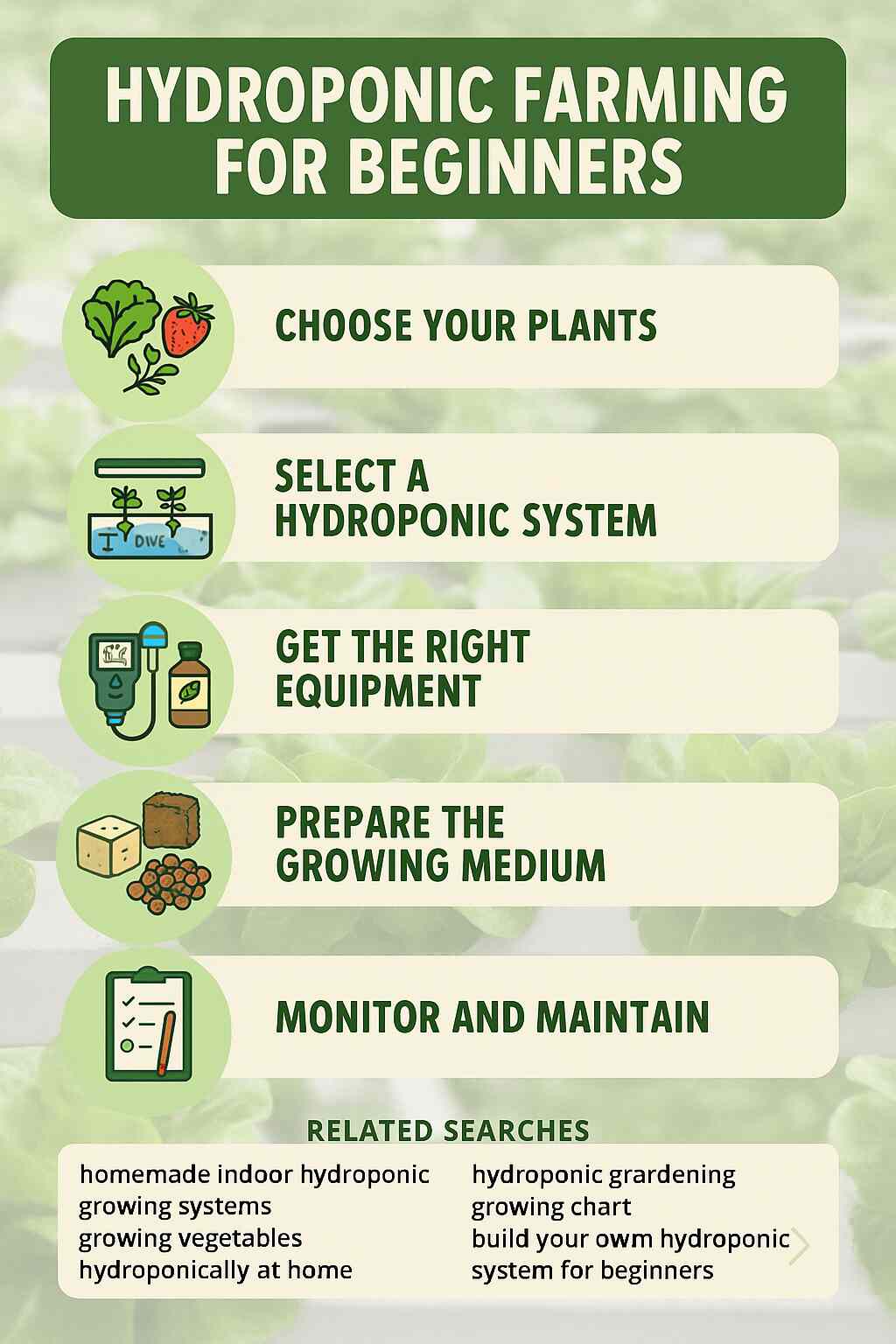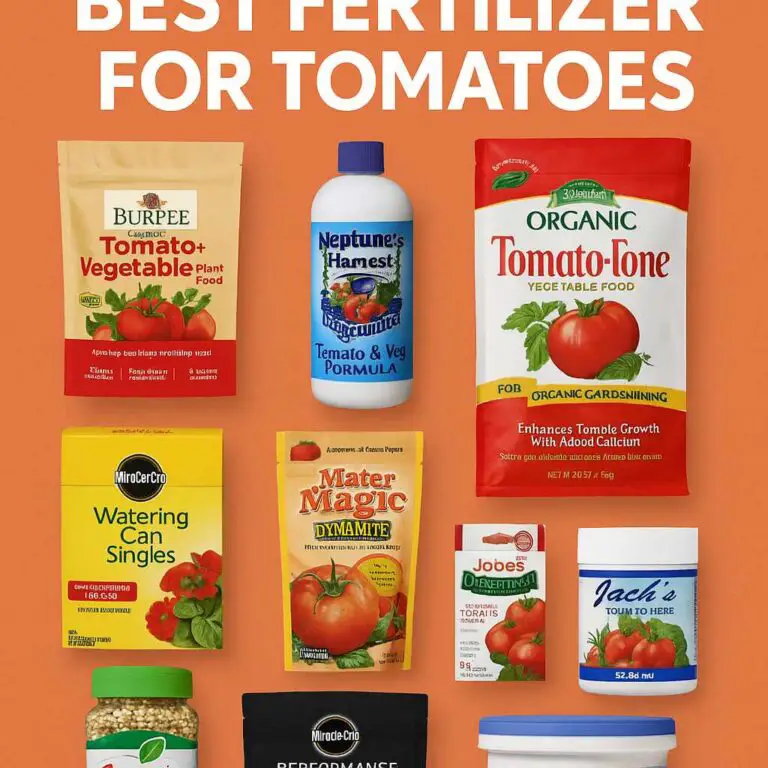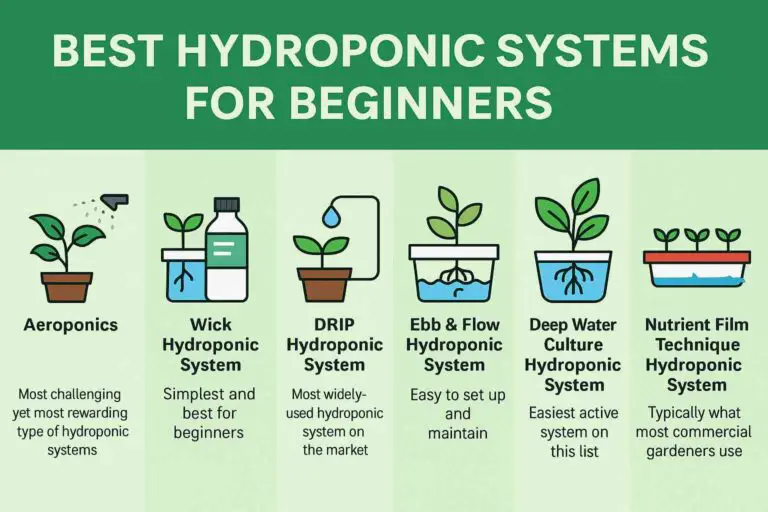Hydroponic farming is a method of growing plants without soil, using a nutrient-rich water solution to deliver essential minerals directly to the roots. It’s space-saving, eco-friendly, and perfect for growing fresh food indoors or outdoors year-round.
Whether you’re gardening on your balcony or turning your spare room into a green space, hydroponics is one of the easiest ways to grow food at home—especially with the right system.
🧰 Step-by-Step: How to Start Hydroponic Farming for Beginners
1. Choose the Right Plants
Start with easy-to-grow crops that thrive in hydroponics:
-
Lettuce 🥬
-
Spinach
-
Basil & Mint 🌿
-
Kale
-
Strawberries 🍓
-
Tomatoes 🍅
🌟 Starter Kit: AeroGarden Harvest Indoor Garden Kit
✅ Grows herbs and greens easily with LED grow lights and auto reminders.
2. Pick a Beginner-Friendly Hydroponic System
Each system has unique features. Choose based on your space, budget, and time:
| System | Best For | Difficulty |
|---|---|---|
| Wick System | Herbs & microgreens | Very Easy |
| Deep Water Culture (DWC) | Lettuce & greens | Easy |
| Ebb & Flow (Flood & Drain) | Larger plants | Moderate |
| Nutrient Film Technique (NFT) | Compact & fast-growing | Advanced |
| Drip System | Versatility | Moderate |
📦 Best Beginner Kit: DreamJoy DWC Hydroponic Bucket Kit
✅ Simple setup with net pots, air pump, and tubing included.
3. Gather Essential Equipment
To get started, you’ll need:
-
Grow lights for indoor setups
-
pH meter to monitor nutrient solution
-
Air pump (for DWC or Ebb & Flow)
-
Hydroponic nutrient solution
-
Timers for lighting/watering
-
Net pots or plant holders
🧪 Recommended: General Hydroponics Flora Series Nutrients
✅ Balanced 3-part formula for all hydroponic systems.
🔦 Grow Light Pick: VIPARSPECTRA Full Spectrum LED
✅ Full-spectrum light to support all growth stages.
4. Select a Growing Medium
Since there’s no soil, your plants need support. Choose from:
-
Rockwool cubes
-
Clay pellets (LECA)
-
Coconut coir
-
Perlite
🪴 Top Medium: Hydroton Expanded Clay Pebbles
✅ Reusable, pH-neutral, and great for root oxygenation.
5. Monitor and Maintain Your System
Hydroponic farming requires regular checks to ensure healthy growth:
-
Check pH (5.5–6.5) weekly
-
Monitor nutrient levels (EC/TDS)
-
Clean your system monthly
-
Use timers to control lighting and irrigation
📏 Best Tool: Apera Instruments pH & TDS Combo Meter
✅ Accurate, beginner-friendly digital tool.
🏡 Where to Set Up Your Hydroponic Garden
You don’t need a big yard or greenhouse! Great beginner locations include:
-
Indoor kitchen countertops
-
Balconies or patios
-
Spare room or closet with grow lights
-
DIY vertical shelves
🔧 Build-Your-Own Option: VIVOSUN 90-Site Hydroponic NFT Kit
✅ Perfect for serious beginners with multiple plants.
🧠 Tips for Beginners
-
🌡️ Keep room temperature between 65°F–75°F
-
💧 Use filtered water if possible
-
🌞 Aim for 14–16 hours of light daily
-
🔁 Refresh the nutrient solution every 2–3 weeks
-
📚 Learn gradually with small systems first
📘 Helpful Book: Hydroponics for Beginners Guide
✅ Easy-to-follow with diagrams and setup examples.
🧾 Quick Checklist for Getting Started
✅ Choose beginner plants
✅ Pick a system (Wick, DWC, etc.)
✅ Buy grow lights and nutrients
✅ Get a pH meter and air pump
✅ Use a growing medium
✅ Maintain pH and nutrient levels
✅ Clean system monthly
📦 Best Beginner Hydroponic Kits on Amazon
📍 Related Searches You Might Explore:
-
Homemade indoor hydroponic growing systems
-
Growing vegetables hydroponically at home
-
Hydroponic gardening growing chart
-
Build your own hydroponic system
-
Best hydroponic system for beginners
Final Tip: Start small, keep it simple, and enjoy the learning process. Hydroponics is not only a rewarding way to grow your own food—it’s also an exciting journey into sustainable and modern gardening.








